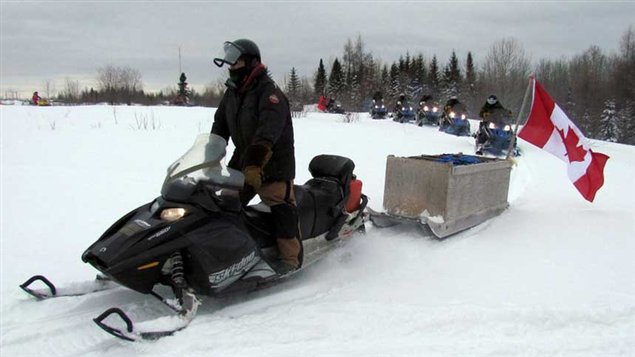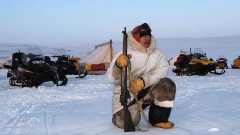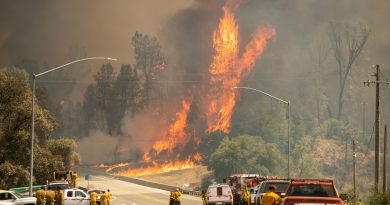Canadian Rangers celebrate 20 years in northern Ontario

(Sgt Peter Moon / Canadian Rangers)
To mark this anniversary of service, members of the 3rd Canadian Ranger Patrol Group have embarked upon a 2,250km snowmobile trek across northern Ontario.
Many Canadians who know about the Rangers think they only patrol along the Arctic coast, however they are in fact right across Canada patrolling remote and difficult to access regions.

Many Canadians in Canada’s most populous province would be surprised to know that the Rangers have been the eyes and ears of the Canadian military in northern regions of the central province for two decades.
They began their service originally to the 1950s providing security at remote military sites, before being disbanded in the 70’s. They were officially re-formed in 1993, with the first Ontario patrol in 1994.
The anniversary patrol of about two dozen Rangers arrived in the town of Cochrane this week, the half-way point, after travelling from Nabiski Lake near the Manitoba-Ontario boundary and along the shoreline of Hudson Bay.

After participating in the town’s winter Carnival, the members have begun heading back north to their various homes in Attawapiskat, Fort Albany, Fort Severn, Kashechewan, Moose Factory, and Peawanuck
Brigadier-General Julian Chapman who spent three days travelling with the group said, “The North is a critical part of the province of Ontario for the army in providing service to our communities and Canadians. This is where the Canadian Armed Forces can really serve Canadians. It’s our Rangers who go out and literally risk life and limb to protect the people of the North on a daily basis.”
The trek has not been without its challenges, including -60 degree Celsius temperatures, and whiteouts.
There are some 5,000 Rangers who are part-time reservists in the army spread across more than 200 remote and isolated communities. The Ontario patrol has 450 members who have

conducted search and rescue operations for missing hunters, trappers, fishers, and overdue travellers. They have rescued the crew of a downed plane, and played key roles in evacuations of several First Nations threatened by forest fires, tainted water, and spring flooding.
The Canadian Rangers are a sub-component of the Canadian military. Long ago, it was realized that the best way to patrol Canada’s arctic and sub-arctic remote coastlines, was to use the skills and knowledge of the peoples that lived in these regions, hence the Rangers are comprised almost entirely of aboriginal members.
- The Rangers are divided into 5 regions, 1st Canadian Ranger Patrol group covers a vast area of Nunavut, Yukon Territory and Northwest Territories and is headquartered in Yellowknife, Northwest Territories
- 2nd Rangers covers all northern areas of Quebec
- 3rd Rangers covers northern Ontario, primarily around Hudson and James bays.
- 4th covers northern and coastal regions British Columbia, and northern Alberta, Saskatchewan and Manitoba
- 5th Rangers covers Newfoundland and Labrador and is headquartered in Gander, Newfoundland.



